Diese Seite ist Teil des Projektes
offizielle Flaggen – official Flags: |
|
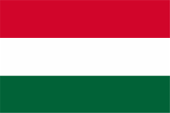 |
National- und Handelsflagge – national and merchant flag, Seitenverhältnis – ratio = 2:3, Quelle/Source, nach by: Wikipedia (D)   |
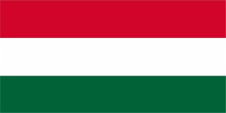 |
Staatsflagge – state flag (official flag), Seitenverhältnis – ratio = 1:2, Quelle/Source, nach by: Wikipedia (D) |
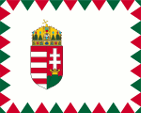 |
Kriegsflagge – war flag, Seitenverhältnis – ratio = 3:4, Quelle/Source, nach by: Flags of the World |
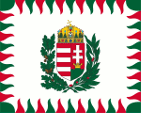 |
Truppenfahne – military unit colour, Seitenverhältnis – ratio = 3:4, Quelle/Source, nach by: Flags of the World |
inoffizielle Flaggen – unofficial Flags: |
|
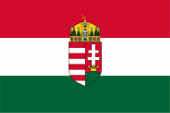 |
inoffizielle Nationalflagge – unofficial national flag, Seitenverhältnis – ratio = 2:3, Quelle/Source, nach by: Foto, news.cgtn.com |
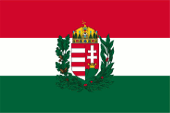 |
inoffizielle Nationalflagge – unofficial national flag, Seitenverhältnis – ratio = 2:3, Quelle/Source, nach by: Foto, www.gettyimages.ch    |
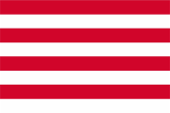 |
"Arpad-Flagge – Arpad-Flag", inoffizielle Nationalflagge – unofficial national flag, Seitenverhältnis – ratio = 2:3, Quelle/Source, nach by: Foto, www.alamy.com |
historische Flaggen und Wappen – historical Flags and Coats of Arms: |
||
Von der Protoheraldik bis zum 19. Jahrhundert – from the proto-heraldry to 19th century |
||
|
|
||
| Rechteckige Flaggen, wie wir sie kennen, sind meist Produkte der Neuzeit. Im Mittelalter waren Fahnen oft anders geformt, zeigten die Form eines Wappens, waren quadratisch oder trugen Schwänze. Sie symbolisierten keine Nation, sondern zeigten das Bild des Wappens des Herrschers auf einem Fahnentuch. So auch in Ungarn. |
 |
Rectangular flags, as we know them today, are mostly products of modern times. In the middle ages, flags were often shaped differently, showed the shape of a coat of arms, were square or wore tails.
They symbolized no nation, but showed the image of the ruler's coat of arms on a flag-cloth. As well as in Hungary. |
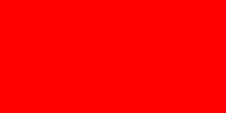 |
10. Jhd./cent., Fürst Arpad – Prince Arpad, Quelle/Source, nach by: Flaggen Wappen Hymnen, in modernem Zuschnitt – in modern shape | |
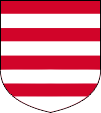 |
 |
9. Jhd./ 9th cent. bis/to 1301, Arpad-Dynastie – Arpad-Dynasty, Quelle/Source, nach by: Flags of the World, in modernem Zuschnitt – in modern shape |
 |
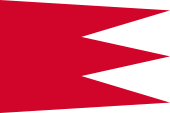 |
11. Jhd./11th century, König Stephan – King Stephen, Quelle/Source, nach by: Flags of the World, in modernem Zuschnitt – in modern shape |
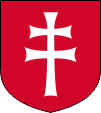 |
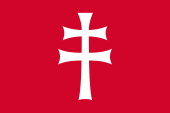 |
ab/from ca. 1172, König Bela III. – King Bela III., Quelle/Source, nach by: Flags of the World, in modernem Zuschnitt – in modern shape |
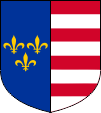 |
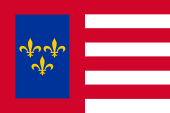 |
1301–1382, Haus Anjou – House of Anjou, Quelle/Source, nach by: Flags of the World, in modernem Zuschnitt – in modern shape |
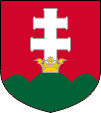 |
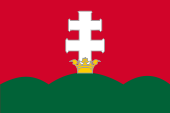 |
14. Jhd. / 14th century, Ungarn – Hungary, Quelle/Source, nach by: Wikipedia (D), in modernem Zuschnitt – in modern shape |
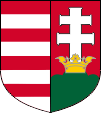 |
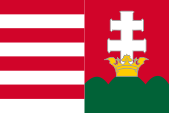 |
15.-17. Jhd. / 15th-17th century, Ungarn – Hungary, Quelle/Source, nach by: Wikipedia (D), in modernem Zuschnitt – in modern shape |
 |
 |
18. Jhd. / 18th century, Ungarn – Hungary, Quelle/Source, nach by: Flaggen und Wappen der Welt, |
 |
 |
1848/1849, Republik Ungarn – Republic of Hungary, Quelle/Source, nach by: Wikipedia (D)    |
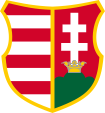 |
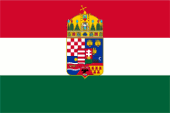 |
1867–1908, Königreich Ungarn – Kingdom of Hungary, Seitenverhältnis – ratio 2:3 (?), Quelle/Source, nach by: Wikipedia (D) |
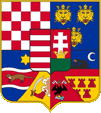 |
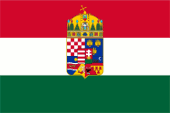 |
1908–1918, Königreich Ungarn – Kingdom of Hungary, Seitenverhältnis – ratio 2:3, Quelle/Source, nach by: Wikipedia (D) |
|
|
||
historische Flaggen – historical Flags: |
|
Österreich-Ungarn – Austria-Hungary |
|
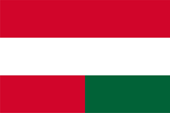 |
1869–1918, |
 |
1908–1918, |
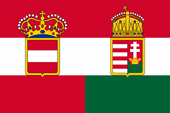 |
1869–1918, |
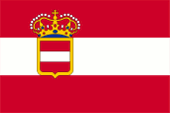 |
1894–1915, |
historische Flaggen – historical Flags: |
|
Ungarn ab 1919 – Hungaria from 1919 |
|
 |
1918–1949, |
 |
1919–1944, |
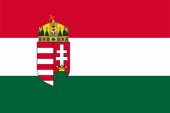 |
1919–1944, |
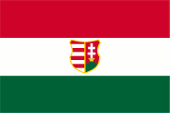 |
1946–1949, |
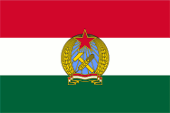 |
1949–1956, |
|
Die Flagge Ungarns zeigt drei waagerechte Streifen in Rot, Weiß und Grün.
Sie wurde in der heutigen Form erstmals im 19. Jahrhundert verwendet. In
ihrer heutigen Funktion als National-, Staats- und Handelsflagge wurde sie
erstmals am 01.10.1957 gehisst. Eine Verordnung aus dem Jahr 2000 legt für
offzielle Flaggen ein Seitenverhältnis von 1:2 fest. Die National- und die
Handelsflagge verblieben bei 2:3. Die Farbtöne der Farben der Flagge sind
definiert, zuletzt mit der Vorschrift MSZ 1361:2009. Die gibt vor: Pantone
TCX 18-1660 Tomato - Hex #CE2939 - für Rot und Pantone TCX 18-6320 - Hex
#477050 für Grün. Aus den Hex-Werten lassen sich folgende Pantone Farbtöne
ableiten: Rot = Pantone 711 C, Grün = Pantone 626 C. Die Farben der Flagge
werden heute folgendermaßen interpretiert: Weiß steht für die Reinheit, Grün
für die Hoffnung und Rot für das im Kampf um die Freiheit vergossene Blut. Die Farbe Rot geht auf die Banner des Fürsten Árpád (9.Jhd.) zurück, der im Jahre 895 die Ungarn in ihre heutige Heimat geführt hat. Das Weiß geht auf ein byzantinisches Doppelkreuz zurück, das dem ungarischen König Bela III. vom Kaiser von Byzanz verliehen worden war. Die Farben Rot und Weiß in acht Streifen gelten auch als die Farben der Arpaden und sind teilweise Legende. Erstmalig nachgewiesen auf einer Urkunde von König Emmerich (1196–1204). Die Streifen sollen angeblich die vier Flüsse Donau, Theis, Save und Drau verkörpern. Dieses Muster wurde später mit der Region Niederungarn (Altungarn, das heutige Ungarn) in Verbindung gebracht. Das Grün geht auf das Wappen von König Bela (1061–1063) zurück, der ein Wappen verwendete, das einen grünen Dreiberg auf einem roten Schild zeigte, darauf ein weißes Doppelkreuz. Die kleine Krone am Fuß des Kreuzes wurde erst im 17. Jahrhundert ergänzt. Dieses Wappen wurde später mit der Region Oberungarn (Neuungarn, die heutige Slowakei) in Verbindung gebracht. Die drei Berge repräsentieren seit dem 17. Jahrhundert die Gebirge Tatra, Matra und Fatra. Unter der Herrschaft von Maria Theresia, zwischen 1740 und 1780, Königin von Böhmen und Ungarn, Erzherzogin von Österreich und deutsche Kaiserin, wurde die Verwendung von Flaggen mit der Heraldik Oberungarns erlaubt. Im Jahre 1848, dem Jahr der Revolutionen, wurden viele Flaggen nach französischem Vorbild als dreifarbige Flagge geschaffen. So auch die heutige ungarische Flagge mit den drei Streifen in Rot, Weiß und Grün. Diese drei Farben zeigte angeblich schon das Band, welches das Siegel von König Andreas II. an einer Urkunde aus dem Jahre 1222 hielt. Mit dem österreichisch-ungarischen Ausgleich und der Schaffung der österreichisch-ungarischen Doppelmonarchie (1867) wurden die ungarischen Farben im wehenden Teil der Nationalflagge und der Handelsflagge Österreich-Ungarns verwendet. Die rot-weiß-grüne Flagge wurde anlässlich der Unabhängigkeit und Proklamation der Republik am 16.11.1918 als Flagge angenommen. Nach dem Sturz von Admiral Horthy durch deutsche Truppen im März 1944 wurde das Wappen 1945 geändert. Nach dem Krieg führte die Regierung Tildy das 1848 geschaffene Kossuth-Wappen (ohne Krone) wieder ein. Nach der kommunistischen Machtergreifung im Zusammenhang mit der Besetzung Ungarns durch sowjetische Truppen im Zweiten Weltkrieg, wurde am 18.08.1949 die Volksrepublik Ungarn proklamiert und eine neue Flagge eingeführt. Sie zeigte ein neues Wappen mit kommunistischer Symbolik. Im Jahre 1956 kam es zu einem antikommunistischen Volksaufstand. Während des Aufstandes wurden Flaggen verwendet, die ein Loch in der Mitte hatten. Das kommunistische Wappen war aus ihnen herausgeschnitten worden. Auch wurden Flaggen mit dem Wappen senkrecht geteilt, und nur die Elemente ohne Wappen wieder zusammengenäht. Nach dem Aufstand wurde am 01.10.1957 ein neues Wappen eingeführt, jedoch bis zum Ende des Kommunismus im Jahre 1989 nicht mehr auf der Flagge verwendet. |
The flag of Hungary shows three horizontal stripes in red, white and green.
It was hoisted in the today’s shape for the first time in the 19th century.
In its today's function as nataional, state (official) and national flag it
was hoisted first on 1st of October in 1957. A regulation or enactment from the year 2000 lays down a ratio of 1:2 for official flags (state flags). The national and merchant flag remained at 2:3. The shades of the colours of the flag are defined, most recently by the MSZ 1361:2009 regulation, which specifies: Pantone TCX 18-1660 Tomato - Hex #CE2939 - for red and Pantone TCX 18-6320 - Hex #477050 for green. The following Pantone colours can be derived from the hex values: Red = Pantone 711 C, Green = Pantone 626 C. The colours of the flag are today interpreted as follows: White stands for purity, green for hope and red for the in the fight for freedom given blood. The colour red has its roots in the banners of Prince Árpád (9th cent.), who lead the Hungarians into their today’s homeland in the year 895. The white goes back to a Byzantine double cross, which was given to the Hungarian King Bela III. by the emperor of Byzantium. The colors red and white in eight stripes are also considered as the colors of the Arpadian Dynasty but they are partly a legend. Proven for the first time they are on a document of king Emmerich (1196–1204). They should ostensibly embody the four rivers Donau, Theis, Save and Drau. This pattern became later transfered to the region Lower Hungary (Old Hungary, the today’s Hungary). The colour green has its roots in the coat of arms of King Bela (1061–1063), who used a scutcheon which showed a green triple-mountain on a red shield an on it a white double-cross. The small crown at the foot of the cross was added not until the 17th century. That coat of arms became later transfered to the region Upper Hungary (New Hungary, the today’s Slovakia). The three mountains represent since the 17th century, the mountains Tatra, Matra and Fatra. Under the reign of Maria Theresa, from 1740 to 1780, Queen of Hungary and Bohemia, Archduchess of Austria and German Empress, was the use of flags of the Upper Hungarian heraldry allowed. In 1848, the year of revolutions, many flags were created on the French model as a tri-colored flag. This is also the current Hungarian flag with the three stripes in red, white and green. These three colors had allegedly showed the tape, which held the seal of King Andrew II in a deed from the year 1222. With the Austria-Hungaryn compensation and the creation of the Austria-Hungaryn dual monarchy (1867), the Hungarian colors had been used in the flying part of the national flag and the trade flag of Austria-Hungary. The red-white-green flag was adoped on the occasion of the independence and proclamation of the Republic on 16th of November in 1918. After the fall of Admiral Horthy, forced by German troops in March 1944, the coat of arms was changed in 1945. After the war, the Tildy government reintroduced the coat of arms of Kossuth (without crown). It was created in 1848. After the Communist seizure of power in connection with the occupation of Hungary by Soviet troops during World War II, the People's Republic of Hungary was proclaimed on 18th of August in 1949, and a new flag was introduced. It showed a new coat of arms with communist symbolism. In 1956 there was an anti-communist uprising. During the uprising, flags were used that had a hole in the middle. The communist coat of arms had been cut out of them. Flags with the coat of arms had also been divided vertically, and only the elements without the coat of arms were sewn together again. After the uprising was introduced a new coat of arms on 1st of October in 1957, but it was not in use on the flag until the end of communism in the year 1989. |
| Quelle/Source: Flags of the World, Wikipedia (D), Die Welt der Flaggen, Flaggen Wappen Hymnen, Flaggen und Wappen der Welt, Flaggen Enzyklopädie, Flaggen-Atlas Erde, Jürgen Kaltschmitt | |
Wappen – Coat of Arms: |
|
 |
Wappen von Ungarn – coat of arms of Hungary, Quelle/Source, nach by: Tibor Piros, Public domain, via Wikimedia Commons |
historische Wappen – historical Coats of Arms: |
|
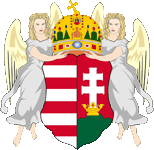 |
1867–1918, kleines Wappen Ungarns – lesser coat of arms of Hungary |
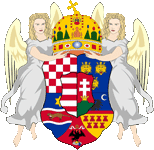 |
1867–1908, großes Wappen Ungarns – greater coat of arms of Hungary |
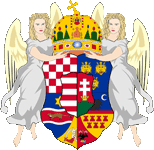 |
1908–1918, großes Wappen Ungarns – greater coat of arms of Hungary |
 |
1918–1944, Wappen Ungarns unter Horthy – coat of arms of Hungary under Horthy, Quelle/Source, nach by: Tibor Piros, Public domain, via Wikimedia Commons |
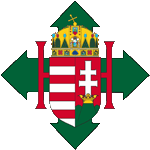 |
1945, Wappen Ungarns unter Szálasi – coat of arms of Hungary under Szálasi, Quelle/Source, nach by: Jürgen Kaltschmitt |
 |
1946–1949, Wappen Ungarns unter Tildy – coat of arms of Hungary under Tildy, Quelle/Source, nach by: Jürgen Kaltschmitt |
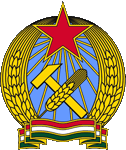 |
1949–1957, Wappen Ungarns – coat of arms of Hungary, Quelle/Source: By Thommy [CC0 or Public domain], via Wikimedia Commons |
 |
1956, Hoheitszeichen auf Fahrzeugen und Ausrüstung der am antikommunistischen Aufstand beteiligten ungarischen Truppen – badge on vehicles and equipment of the Hungarian troops who were involved in the anti-communist uprising, Quelle/Source, nach by: Jürgen Kaltschmitt |
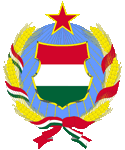 |
1957–1989, Wappen Ungarns – coat of arms of Hungary, Quelle/Source: Corel Draw 4 |
|
Das heutige Wappen Ungarns wurde am 03.07.1990, nach anderen Quellen am
11.07.1990 wieder eingeführt. Es zeigt einen gespaltenen Schild, links die
Heraldik Niederungarns (Altungarn, das heutige Ungarn), ein acht mal rot und
weiß gestreiftes Feld, und rechts die Heraldik Oberungarns (Neuungarn, die
heutige Slowakei). Darüber die Stephanskrone. In dieser Form, wurde es 1464
erstmals abgebildet, zur Zeit des Königs Mattias Corvinius aus dem Hause
Hunyadi. Im Jahre 1699 wurde Ungarn ein habsburgisches Kronland. Wenige
Jahre später tauchte der geteilte Schild wieder auf, und zwar auf Flaggen
des aufständischen Fürsten Rákóczi II. Die Habsburger gestatteten dann ab
der Mitte des 18. Jahrhunderts die Verwendung des Dpoppelkreuzes mit dem
Dreiberg. Offiziell wurde geteilte Schild erst wieder 1848/49, zur Zeit der
Republik Ungarn. Nach dem Ausgleich (1867) wurde er offiziell für die
ungarische Reichshälfte übernommen und bis 1918 beibehalten. Ab März 1920
wurde das Wappen wieder offiziell für das nunmehr unabhängige Ungarn
übernommen. Zwischen 1944 und 1949 wurde die Stephanskrone vom Wappen
entfernt und 1949 wurde es abgeschafft. 1956 taucht es zum
antikommunistischen Aufstand kurz wieder auf, und wird nach der
kommunistischen Ära ab Juli 1990 wieder als Wappen Ungarns - mit der
Stephanskrone - angenommen. Die Farbe Rot geht auf die Banner Fürsten Árpád
(9.Jhd.) zurück, der im Jahre 895 die Ungarn in ihre heutige Heimat geführt
hat. Das byzantinische Doppelkreuz Weiß geht den ungarischen König Bela III.
zurück. Es wurde ihm vom Kaiser von Byzanz verliehen. Die Farben Rot und
Weiß in acht Streifen gelten auch als die Farben der Arpaden und sind
teilweise Legende. Erstmalig nachgewiesen auf einer Urkunde von König
Emmerich (1196–1204). Die Streifen sollen angeblich die vier Flüsse Donau,
Theis, Save und Drau verkörpern. Dieses Muster wurde später mit der Region
Niederungarn (Altungarn, das heutige Ungarn) in Verbindung gebracht. Der
grüne Dreiberg geht auf das Wappen von König Bela (1061–1063) zurück, der
ein Wappen verwendete, ihn auf einem roten Schild zeigte, darauf das weiße
Doppelkreuz. Die kleine Krone am Fuß des Kreuzes wurde erst im 17.
Jahrhundert ergänzt. Dieses Wappen wurde später mit der Region Oberungarn
(Neuungarn, die heutige Slowakei) in Verbindung gebracht. Die drei Berge
repräsentieren seit dem 17. Jahrhundert die Gebirge Tatra, Matra und Fatra.
Diese beiden Elemente, das rot-weiß gestreifte Feld und das Doppelkreuz mit
dem Dreiberg bestimmten über die Jahrhunderte die Heraldik Ungarns, entweder
einzeln, oder auf einem Schild vereint oder auch um die Heraldik der jeweils
herrschenden Dynastie ergänzt. Unter der Herrschaft von Maria Theresia, zwischen 1740 und 1780, Königin von Böhmen und Ungarn, Erzherzogin von Österreich und deutsche Kaiserin, wurde die Verwendung von Flaggen mit der Heraldik Oberungarns erlaubt. Das große Wappen des Königreichs Ungarn zeigte ab 1867 in einem mehrfach geteilten Schild die Heraldik der Kronlande des Reiches (Kroatien, Dalmatien, Slawonien, Siebenbürgen und Fiume, ab 1908 auch Bosnien) belegt mit dem ungarischen Herzschild. Mit dem Ende der Habsburger Monarchie erlangte Ungarn die Unabhängigkeit, jedoch verlor es alle seine Kronländer, so dass das Wappenschild nur noch die Heraldik Ober- und Niederungarns zeigte, obwohl Oberungarn (Slowakei) Teil der Tschechoslowakei geworden war. Nach dem Sturz von Admiral Horthy durch deutsche Truppen im März 1944 wurde das Wappen 1945 geändert. Nach dem Krieg führte die Regierung Tildy das 1848 geschaffene Kossuth-Wappen (ohne Krone) wieder ein, benannt nach dem Revolutionär Lajos Kossuth, der Ungarn 1848/1849 in die Freiheit führen wollte. Nach der kommunistischen Machtergreifung im, Zusammenhang mit der Besetzung Ungarns durch sowjetische Truppen im Zweiten Weltkrieg, wurde am 18.08.1949 die Volksrepublik Ungarn proklamiert und ein neues Wappen mit kommunistischer Symbolik eingeführt. Es zeigte eine Ähre und einen Hammer über Kreuz, unterhalb eines roten Sterns vor einem blauen Hintergund, umgeben von Weizenähren. Nach dem antikommunistischen Volksaufstand im Jahre 1956 wurde am 01.10.1957 ein neues Wappen eingeführt. Es zeigte einen Schild mit den Farben Ungarns unterhalb eines roten Sterns vor einem blauen Hintergrund, umgeben von Weizenähren, die mit Bändern in den ungarischen Farben zusammengehalten wurden. Mit dem Ende des Kommunismus in Ungarn wurde dieses Wappen abgeschafft und man kehrte zur alten Heraldik zurück. |
The current coat of arms of Hungary was introduced on 3rd of July in 1990,
according to other sources on 11th of July in 1990. It shows a divided
shield, left the Lower Hungarian heraldry (Old Hungary, the today's
Hungary), an eight-times red and white striped field, and to the right the
heraldry of Upper Hungary (New Hungary, today's Slovakia). Above it the
Stephan's crown. In this form, it was first depicted in 1464, at the time of
King Mattias Corvinius from the House of Hunyadi. In 1699, Hungary became a
Habsburg crown land. A few years later, the bisected shield reappeared on
flags of the insurgent Prince Rákóczi II. From the middle of the 18th
century, the Habsburgs permitted the use of the double cross with the
triple-mountain. The bisected shield became officially again only in
1848/49, at the time of the Republic of Hungary. After the compensation
(1867) it was officially taken over for the Hungarian part of the empire and
maintained until 1918. From March 1920, the coat of arms was officially
adopted again for the now independent Hungary. Between 1944 and 1949, the
Crown of St. Stephen was removed from the coat of arms and in 1949 the whole
the coat of arms was abolished. In 1956 it reappeared shortly during the
anti-communist uprising, and after the communist era, it was again adopted
again – with the Crown of St. Stephen – as the coat of arms of Hungary, from
July 1990. The colour red has its roots in the banners of Prince Árpád (9th cent.), who lead the Hungarians into their today’s homeland in the year 895. The Byzantine double cross goes back to the Hungarian King Bela III. It was awarded to him by the emperor of Byzantium. The colors red and white in eight stripes are also considered as the colors of the Arpadian Dynasty but they are partly a legend. Proven for the first time they are on a document of king Emmerich (1196–1204). They should ostensibly embody the four rivers Donau, Theis, Save and Drau. This pattern became later transfered to the region Lower Hungary (Old Hungary, the today’s Hungary). The green triple-mountain has its roots in the coat of arms of King Bela (1061–1063), who used a scutcheon which showed it on a red shield an on it the white double-cross. The small crown at the foot of the cross was added not until the 17th century. That coat of arms became later transfered to the region Upper Hungary (New Hungary, the today’s Slovakia). The three mountains represent since the 17th century, the mountains Tatra, Matra and Fatra. These two elements, the red-and-white striped field and the double cross with the triple-mountain represented over the centuries the heraldry of Hungary, either individually, or on one shield united, or also supplemented by the heraldry of the ruling dynasty. Under the reign of Maria Theresa, from 1740 to 1780, Queen of Hungary and Bohemia, Archduchess of Austria and German Empress, was the use of flags of the Upper Hungarian heraldry allowed. The greater coat of arms of the Kingdom of Hungary showed from 1867 in a multiple shared shield the heraldry of the crown's lands of the empire (Croatia, Dalmatia, Slavonia, Transylvania and Fiume, also Bosnia from 1908) and in the center the Hungarian heart shield. With the end of the Habsburg monarchy, Hungary gained its independence, but it lost all of his crown's lands, so that the shield showed only the heraldry of Upper and Lower Hungary although Upper Hungary (Slovakia) became part of Czechoslovakia. After the fall of Admiral Horthy, forced by German troops in March 1944, the coat of arms was changed in 1945. After the war, the Tildy government reintroduced the coat of arms of Kossuth (without crown). It was created in 1848, named after the revolutionar Lajos Kossuth, who wanted to lead Hungary into freedom in the years 1848/1849. After the Communist seizure of power in connection with the occupation of Hungary by Soviet troops during World War II, the People's Republic of Hungary was proclaimed on 18th of August in 1949, and a new flag was introduced. It showed a new coat of arms with communist symbolism. It showed an ear and an hammer over cross, beneath a red star on a blue background, surrounded by wheat ears. After the anti-communist uprising in 1956 was adopted a new coat of arms on 1st of October in 1957. It showed a shield with the colours of Hungary below a red star on a blue background, surrounded by wheat ears, hold together with bands in the Hungarian colors. With the end of communism in Hungary this coat of arms was abolished, and they returned back to the old heraldry. |
| Quelle/Source: Wikipedia (D), Die Welt der Flaggen, Flaggen Wappen Hymnen, Flaggen und Wappen der Welt, Jürgen Kaltschmitt | |
| Stephanskrone und Heilige Krone– Crown of Stephen and Holy Crown: | |
|
|
|
| Der ungarische Fürst Stephan war – mit Unterstützung des Deutschen Kaisers Otto III. – mit dem Wunsch um die Königswürde erfolgreich an Papst Silvester II. herangetreten. Dazu wurde Ungarn vom Fürsten dem Papst formal geschenkt, der es als Königreich und päpstliches Lehen an (nunmehr) König Stephan I. übergab. Dazu wurde er im Jahre 1000 mit einer vom Papst übersandten Krone gekrönt und erhielt den Titel 'Apostolische Majestät'. Diese Krone, die wirkliche Stephanskrone (in Ungarn bis heute so genannt), ging schon im Jahre 1074 in Österreich verloren. Wie sie aussah ist nicht überliefert. Man vermutet eine einfache Reif- oder Zackenkrone ohne Bügel. Die älteste Abbildung davon geht auf das 15. Jahrhundert zurück, und wird schon damals ein Produkt der Vermutung gewesen sein. | Supported by the German Emperor Otto III, the Hungarian Prince Stephan had successfully appealed to Pope Silvester II., with the wish for the King's dignity. In this way Hungary was formally given by the prince to the Pope, who handed it back to (the henceforth) King Stephen I. as kingdom and papal fiefdom.
For this purpose he was crowned in the year 1000 with a crown sent by the Pope and to him was given the title 'Apostolic Majesty'. This crown, the real Stephen's Crown (so called in Hungary until today), was lost in the year 1074 in Austria. What it looked like is not passed down. One suspects a simple ripe or spiked crown without a bow. The oldest depiction of it dates back to the 15th century, and it will already have been a product of conjecture. |
|
Die Krone, die heute das Wappen Ungarns ziert, ist im deutschen Sprachraum als 'Stephanskrone' bekannt. In Ungarn wird sie 'Heilige Krone' genannt.
|
That crown, which adorns the today's coat of arms of Hungary, is known in the German language area as 'Stephanskrone' (Crown of Saint Stephen). In Hungary, it is called the 'Holy Crown'. |
 |
|
| Sie entstand zwischen dem 11. und 13. Jahrhundert, wahrscheinlich nach byzantinischem Vorbild, hat einen Bügel, seitliche Pendilien (Schmuckkettchen) und Zierplatten. Im Jahre 1464 wurde sie erstmals auf Münzen abgebildet, zusammen mit dem zweigeteilten ungarischen Wappen. | It was built between the 11th and 13th centuries, probably by Byzantine model, has a temple, lateral pendants (jewelry chains) and decorative plates. In 1464 it was first minted on coins, together with the bisected Hungarian coat of arms. |
| Quelle/Source: Jürgen Kaltschmitt | |
|
Die Wanderschaft der ungarischen Revolutionsfahnen – The travels of the Hungarian revolutionary flags: |
|
|
|
|
| Das Jahr 1848 war das 'Jahr der Revolutionen', fast überall in Europa kam es zu Erhebungen und Aufständen, nicht nur in Frankreich oder Deutschland, nein, auch in Ungarn. Dort wollte der Revolutionär Lajos Kossuth die Ungarn in die Freiheit führen. Die Habsburger, deren Reich an einigen Ecken zu brennen anfing, riefen russische Truppen ins Land. 1849 mußte die ungarische Revolutionsarmee vor den kaiserlich-russischen Truppen bei Vilagos/Hellburg/Sina kapitulieren. Die dort erbeuteten ungarischen Fahnen wurden nach Russland verbracht und dort auch verwahrt. | The year 1848 was the 'year of the revolutions', there were roits and uprisings almost everywhere in Europe, not only in France or Germany, no, also in Hungary. There the revolutionary Lajos Kossuth wanted to lead the Hungarians to freedom. The Habsburgs, whose empire began to burn in some corners, called Russian troops into the country for help. In 1849 the Hungarian Revolutionary Army had to surrender to the Imperial Russian troops at Vilagos/Hellburg/Sina. The Hungarian flags were captured there and were brought to Russia and kept there. |
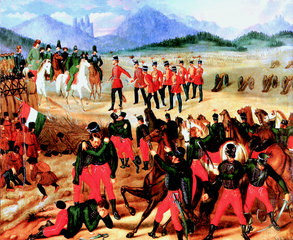 Kapitulation der ungarischen Armee in Világos, 13. August 1849 Quelle/Source: István Szkicsák-Klinovszky (1820 – c. 1880), Public domain, via Wikimedia Commons, click/tip to enlarge |
|
| 1940 schlug Stalin Admiral Horthy ein Tauschgeschäft vor: das Königreich Ungarn läßt den inhaftierten, ungarischen, kommunistischen Funktionär Màtàs Ràkosi ("Stalins bester Schüler, 1956 "Stalins schlimmster Bluthund") frei und lässt ihn in die Sowjetunion ausreisen. Im Gegenzug gibt die Sowjetunion die – immer noch vorhandenen – Fahnen der ungarischen Revolutionsarmee von 1848/49 an das Königreich Ungarn zurück, was dann auch beiderseits geschah. In den Jahren 1945/46, nachdem die Rote Armee Ungarn im Verlauf des Zweiten Weltkriegs erobert hatte und besetzt hielt, wurden die erneut erbeuteten Fahnen wieder nach (Sowjet)Russland verbracht. 1948 gaben die Sowjets anläßlich des 100-jährigen Jubiläums der ungarischen Revolution zumindest einen Teil der ungarischen 48er-Revolutionsflaggen wieder an die nunmehrige Republik Ungarn zurück. Nach der brutalen Niederschlagung des ungarischen Volksaufstandes im Oktober 1956 sollen die Kossuth-Flaggen wieder in die Sowjet-Union verbracht worden sein und in den 1960er-Jahren erneut an die (Volks)Republik Ungarn zurückgegeben worden sein. |
In 1940, Stalin proposed an exchange deal
to Admiral Horthy: the Kingdom of Hungary releases the imprisoned Hungarian
communist functionary Màtàs Ràkosi ("Stalin's best student", 1956 "Stalin's
worst bloodhound 1956") and lets him emigrate to the Soviet Union. In return, the Soviet Union gives the – still existing – flags of the Hungarian Revolutionary Army from 1848/49 back to the Kingdom of Hungary, which then happened on both sides. In 1945/46, after the Red Army had conquered and occupied Hungary during the Second World War, the captured flags were brought back to (Soviet) Russia. In 1948, on the occasion of the 100th anniversary of the Hungarian revolution, the Soviets returned at least a part of the Hungarian 48s revolutionary flags to the now Republic of Hungary. After the brutal suppression of the uprising of the Hungarian people in October 1956 the Kossuth flags are said to have been brought back to the Soviet Union and have been returned to the (People's) Republic of Hungary again in the 1960s. |
| Quelle/Source: Jürgen Kaltschmitt | |
|
Ungarn und seine Symbole im Zweiten Weltkrieg – Hungary and its symbols in World War II: |
|
|
|
|
| Seit dem Frühjahr 1943 hatte Ungarn Friedensfühler in Richtung der westlichen Alliierten ausgestreckt, was den deutschen Geheimdiensten nicht verborgen blieb. Am 18.3.1944 machte Adolf Hitler Admiral Horthy klar, daß Widerstand zwecklos sei, wenn die deutsche Wehrmacht zur Sicherung der Ostfront in Ungarn einrücken werde. Dies erfolgte am 19.03.1944 als "Unternehmen Margarethe". Dies wurde sowohl von der ungarischen Armee als auch von der Zivilbevölkerung "mit Erleichterung" begrüßt. Die Exzesse unter Béla Kun, dem Führer der Ungarischen Räterepublik (21. März 1919 bis zum 1. August 1919), der sogenannte "Rote Terror", waren nicht vergressen. Horthy blieb formal weiterhin im Amt, eine neue, den Deutschen genehme Regierung wurde ernannt. Im August 1944 wechselte Rumänien die Seiten. Am 15.10.1944 wurde ein Waffenstillstand zwischen der Horthy-Regierung und den Sowjets verkündet. Daraufhin wurde Horthy verhaftet und auf Reichsgebiet interniert. Am 16.10.1944 putschten deutsche Truppen und die Miliz der hungaristischen Pfeilkreuzler ("Unternehmen "Panzerfaust") in Budapest, Ferenc Szálasi wurde als Staatsführer eingesetzt und der "Staat Ungarn" proklamiert. Das Wappen Ungarns behielt die Stephanskrone, auf die Szalsi übrigens seinen Amtseid leistete. Der Regierungssitz wurde alsbald nach Güns/Köszeg verlegt. Ein neues ungarisches Staatswappen wurde am 01.01.1945 eingeführt: das traditionelle Wappe mit aufgelegter Stephanskrone belegte ein großes, rotes "H" (Hungarismus) undieses wiederum belegte ein grünes Pfeilkreuz. Auch das Staatssiegel wurde entsprechend geändert. Wahrscheinlich blieben dieses neue Staatswappen/Staatssiegel reine Theorie, bis zum 04.04.1945 war ganz Ungarn von der roten Armee besetzt. Am 16.10.1944 lief der ungarische Generaloberst Béla Miklós zu den sowjetischen Linien über. Infolge dessen proklamierte er in Debrecen, dem provisorischen Sitz seiner Gegenregierung, den "Staat Ungarn". Er wurde Ministerpräsident eines alliierten-sowjetfreundlichen Kabinetts. Man verstand sich als königlich-ungarische Regierung mit Admiral Horthy als Verweser! Offenbar blieb das ungarische Staatswappen mit der Stephanskrone auch hier (zunächst) unangetastet, denn es gibt ein Foto des Politikers Zoltán Tildy am Rednerpult, wie er eine Parlaments-Sitzung eröffnet. Das Rednerpult ist geschmückt mit der Nationalflagge, mit dem bekannten Wappen mit aufgesetzter Stephanskrone. Flankiert ist Tildy von zwei Parlamentsgardisten in Husarenuniform. Eine solche Garde hatten sonst nur die Könige Ungarns, Admiral Horthy und Ferenc Szalasi als Staatsführer. Am 01.02.1946 wurde in Folge von Wahlen die Republik Ungarn unter Zoltán Tildy proklamiert, das Kossuth-Wappen (= ohne Krone) von 1848 wieder eingeführt. 1948 feierte man 100 Jahre ungarische Revolution und es gibt ein Foto der Tribüne mit ungarischen und sowjetischen Funktionären im Schmuck des Kossuth-Wappens. Schließlich wurde Ungarn am 20.08.1949 zur Volksrepublik und führte das berüchtigte "Ràkosi-Wappen" als Staatsemblem ein. |
Since the spring of 1943, Hungary had stretched out peace feelers in the
direction of the western allies, something that was not hidden from the
German secret services. On 18th of March in 1944, Adolf Hitler made it clear
to Admiral Horthy that resistance would be pointless if the German Wehrmacht
were to move into Hungary to secure the Eastern Front. This took place on
19th of March in 1944 as "Unternehmen Margarethe". This was greeted "with
relief" by both the Hungarian army and the civilian population. The excesses
under Béla Kun, the leader of the Hungarian Soviet Republic (21st of March
1919 to 1st of August in 1919), the so-called "Red Terror", were not
forgotten. Formally, Horthy remained in office, and a new government was
appointed that would please the Germans. In August 1944 Romania switched
sides. On 15th of October in 1944, an armistice was announced between the
Horthy government and the Soviets. Thereupon Horthy was arrested and
interned on the territory of the German Empire. On 16th of October in 1944, German troops and the militia of the Hungarist Arrow-Crossers put on a coup in Budapest ("Unternehmen Panzerfaust"), Ferenc Szálasi was appointed as head of state and the "State of Hungary" was proclaimed. The seat of the government was soon relocated to Güns/Köszeg. A new coat of arms for the Hungarian state was introduced on 1st of January in 1945: the traditional coat of arms with the St. Stephen's crown on top covered a large, red "H" (Hungarism) and this in turn was covered by a green cross of arrows. The state seal was changed accordingly. This new state coat of arms / state seal remained in pure theory, because until 4th of April in 1945 whole Hungary was occupied by the Red Army. On 16th of October in 1944 the Hungarian Colonel General Béla Miklós deserted to the Soviet lines. As a result, he proclaimed the "State of Hungary" in Debrecen, the provisional seat of his opposing government. He became Prime Minister of an Allied-Soviet-friendly cabinet. They saw themselves as a royal Hungarian government with Admiral Horthy as administrator! Apparently, the Hungarian national coat of arms with the St. Stephen's crown remained (initially) untouched, because there is a photo of the politician Zoltán Tildy at the lectern opening a parliamentary session. The lectern is adorned with the national flag, with the well-known coat of arms with an attached St. Stephen's crown. Tildy is flanked by two parliament guards in hussar uniform. Usually only the kings of Hungary, Admiral Horthy and Ferenc Szalasi, had such a guard as heads of state. On 1st of February in 1946, following elections, the Republic of Hungary under Zoltán Tildy was proclaimed, and the Kossuth coat of arms (= without crown) from 1848 was reintroduced. In 1948 they celebrated 100 years of the Hungarian Revolution and there is a photo of the grandstand with Hungarian and Soviet officials under the Kossuth coat of arms. Finally, on 20th of August in 1949, Hungary became a People's Republic and introduced the notorious "Coat of arms of Ràkosi" as a state emblem. |
| Quelle/Source: Jürgen Kaltschmitt | |
Flugzeugkokarde – aircraft roundel: |
|
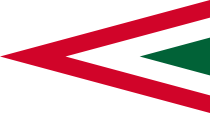 |
seit/since 1991, Flugzeugkokarde – aircraft roundel Quelle/Source, nach/by: Wikipedia (EN) |
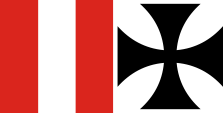 |
1914–1916, Österreich-Ungarn / Austria-Hungary, Flugzeugkokarde – aircraft roundel Quelle/Source, nach/by: Wikipedia (EN) |
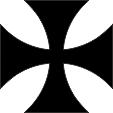 |
1917–1918, Österreich-Ungarn / Austria-Hungary, Flugzeugkokarde – aircraft roundel Quelle/Source, nach/by: Wikipedia (EN) |
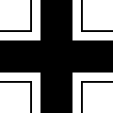 |
1918, Österreich-Ungarn / Austria-Hungary, Flugzeugkokarde – aircraft roundel Quelle/Source: nach/by Wikipedia (DE) |
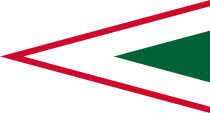 |
1938–1941, Flugzeugkokarde – aircraft roundel Quelle/Source, nach/by: Wikipedia (EN) |
 |
1942–1945, Flugzeugkokarde – aircraft roundel Quelle/Source, nach/by: Wikipedia (EN) |
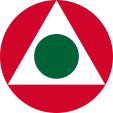 |
1948–1949, Flugzeugkokarde – aircraft roundel Quelle/Source, nach/by: Wikipedia (EN) |
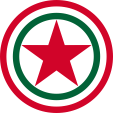 |
1949–1951, Flugzeugkokarde – aircraft roundel Quelle/Source, nach/by: Wikipedia (EN) |
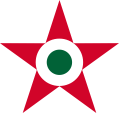 |
1951–1990, Flugzeugkokarde – aircraft roundel Quelle/Source, nach/by: Wikipedia (EN) |
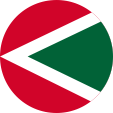 |
1990–1991, Flugzeugkokarde – aircraft roundel Quelle/Source, nach/by: Wikipedia (EN) |
| Landkarten – Maps: |
Lage – Position: |
Landkarte des Landes – Map of the Country: |
| interaktive Landkarte Österreich-Ungarns – interaktive Map of Austria-Hungary: |
|
| Zahlen und Fakten – Numbers and Facts: | |
|
|
|
|
|
|
|
|
|
|
|
|
|
|
|
|
|
|
|
9. Jhd.
· Vertreibung des Nomadenvolkes der Ungarn aus ihrem Land (Etelköz,
Zwischenstromland) zwischen den Flüssen Don und Dnjepr durch die
Petschenegen, unter Fürst Árpád (895–907) erfolgt die Landnahme in Pannonien
(dem heutigen Ungarn) an Theiß und mittlerer Donau 910–955 · Raubzüge der Ungarn durch Europa (Balkan, Italien, Frankreich, Deutschland) 955 · Schlacht auf dem Lechfeld bei Augsburg, Niederlage der Ungarn gegen den deutschen König Otto dem Großen, die Ungarn werden seßhaft 972–997 · Herrschaft von Fürst Gyécsa (Géza), Christianisierung 1000 · Papst Silvester II. lässt Fürst Stephan (István) zum König krönen 1000–1038 · Herrschaft von König Stephan I. (István I.) 1090–1110 · Unterwerfung Kroatiens und Siebenbürgens 1203 · Unterwerfung Dalmatiens 12. Jhd. · Einwanderung deutscher Siedler 1241–1243 · Mongoleninvasion, Teile des Landes werden von den Mongolen besetzt 1290–1301 · Herrschaft von König Andreas III. (letzter Arpade) 1308 · Karl I. (Károly) von Anjou wird König von Ungarn 1370 · Ludwig der Große, I. (Lajos), Sohn von Karl, wird König von Ungarn 1382 · Tod von Ludwig I., Aussterben der Dynastie, die Krone geht an den Verlobten der ältesten Tochter von König Ludwig, den Luxemburger Sigismund 1396 · Schlacht bei Nikopoli, Niederlage des Kreuzheeres (Ungarn, Frankreich, Mähren, Bayern, Böhmen) gegen die vordringenden Türken 1440–1444 · Herrschaft von König Wladyslaw III. (Ulászló I.) aus dem Hause der Jagiellonen 1444 · Wahl von János (Johann) Hunyadi zum Reichsverweser 1458 · Wahl von Matthias I. Corvinus (Sohn von Hunyadi) zum König 1463 · Sieg gegen die Türken 1479 · Frieden von Olmütz, Mähren, Schlesien und die Lausitz werden von Polen an den König Ungarn abgetreten 1485 · Eroberung von Wien 1490 · Tod von Matthias I. Corvinus, Zerfall des Reiches 1490–1526 · Herrschaft der Könige aus dem Hause der Jagiellonen 1526 · Türkenschlacht bei Mohács, Tod von König Ludwig II., Ungarn verliert seine Unabhängigkeit, der Großteil des Landes kommt an das Osmanische Reich, der westliche Teil kommt an Habsburg (Österreich), Siebenbürgen wird (kurzzeitig) ein selbstständiges Fürstentum 1683–1699 · Türkenkriege, ganz Ungarn wird durch die Habsburger von den Türken befreit und wird Habsburgisches Kronland 1848/49 · Revolutionsjahre in Ungarn, Wahl von Lajos Kossuth zum Reichsverweser, Proklamation der Republik Ungarn am 13.04.1849, Ungarn erklärt seine Unabhängigkeit, Niederschlagung durch österreichische und russische Truppen, die ungarische Revolutionsarmee kapituliert am 18.08.1849 bei Világos 08.02.1867 · Österreichisch-Ungarischer Ausgleich, gleiches Recht für beide Landesteile, Entstehung der Doppelmonarchie Österreich-Ungarn, Österreich: bestehend aus den österreichischen Kronländern, Ungarn: bestehend aus Ungarn selbst und seinen Nebenländern (Kroatien, Siebenbürgen und Slawonien), das Haus Habsburg stellt in einer Person den Kaiser von Österreich und den König von Ungarn, Einrichtung von gemeinsamen Ministerien in Außenpolitik, Finanzen und Verteidigung 1878 · Berliner Kongress, Österreich-Ungarn erhält Bosnien (einschl. Herzegowina) 1908 · Bosnien wird Österreich-Ungarn als Reichsland angegliedert 28.06.1914 · Ermordung des österreichischen Thronfolgers Franz Ferdinand und seiner Frau, Beginn des Ersten Weltkriegs (1914–1918), das Deutsche Reich ist dabei Verbündeter Österreichs 01.11.1918 · Unabhängigkeitserklärung Ungarns 03.11.1918 · Waffenstillstand 13.11.1918 · Karl IV. (Karl I.), verzichtet in Ungarn zeitweilig auf die Ausübung seiner Herrschaft, Ende der Habsburger Monarchie 16.11.1918 · Proklamation der Demokratischen Republik Ungarn unter Ministerpräsident Mihály Károlyi 21.03.1919–01.08.1919 · Kommunistischer Ausftand unter Béla Kun ('Föderative Ungarische Sozialistische Räte-Republik') 10.09.1919 · Friedensvertrag von Saint-Germain, Österreich erkennt die Unabhängigkeit Ungarns an 01.03.1920 · Wahl von Admiral Miklós Horthy zum Reichsverweser, Proklamation des Königreichs Ungarn unter der nominellen Herrschaft des Habsburgers Karl IV. 04.06.1920 · Vertrag von Trianon, Ungarn muss die Slowakei, Transkarpatien, Siebenbürgen, Kroatien, Bosnien, Slawonien, Wojvodina, Burgenland und das Banat abtreten (75% seines Territoriums, 60% seiner Bevölkerung) 21.03.1921 · Absetzung des Königs Karl IV. 1938 · Ungarn annektiert Teile der Slowakei und Transkarpatien 1940 · Ungarn annektiert Nordsiebenbürgen, Vojvodina und das Banat 1941 · Ungarn tritt an der Seite der Achsenmächte in den Zweiten Weltkieg ein 15.10.1944 · Miklós Horthy beginnt Waffenstillstandsverhandlungen mit den sowjetischen Truppen 16.10.1944 · Besetzung Ungarns durch deutsche Truppen, Absetzung von Admiral Horthy, Einsetzung einer neuen Regierung unter Ferenc Szálasi (Staat Ungarn) 1944/1945 · Besetzung des Landes durch sowjetische Truppen 21.12.1944 · die provisorische Nationalversammlung wählt Béla Miklós in Debrecen mit sowjetischer Billigung zum Ministerpräsidenten des Staates Ungarn, dessen Regierung im Februar 1945 in Budapest einzieht 01.02.1946 · Proklamation der Republik Ungarn 1947 · Friedensvertrag von Paris, Herstellung der Grenzen von 1937, Zahlung von Reparationen, vertreibung eines Großteils der Deutschen Bevölkerung (260.000 Personen, 53.000 davon werden ermordet), Enteignung von Großgrundbesitz, Verstaatlichung der Industrie 1947–1949 · Machtergreifung durch die Ungarischen Kommunisten unter Hilfe der sowjetischen Besatzungsarmee, Einführung eines Kommunistischen Einparteiensystems 20.08.1949 · Proklamation der Ungarischen Volksrepublik 23.10.1956 · antikommunistische Revolution, Machtergreifung durch Imre Nagy, Austritt aus dem Warschauer Pakt, Demokratisierung 01.11.–04.11.1956 · Niederschlagung der Revolution durch fünf sowjetische Divisionen, hunderte Todesopfer, bis 1963 Hinrichtung von 400 Aufständischen, Flucht von 200.000 Ungarn ins Ausland, Aufstockung der sowjetischen Besatzungstruppen auf 100.000 Mann ab 1963 · schrittweise Liberalisierung der Wirtschaft 19.08.1989 · offizielle Öffnung der Grenzsperranlagen nach Österreich 23.10.1989 · Proklamation der Republik Ungarn, Mehrparteiensystem 25.03.1990 · Wahlen 1990–1991 · Abzug der sowjetischen Besatzungstruppen 12.03.1999 · Ungarn wird Mitglied der NATO 01.05.2004 · Ungarn wird Mitglied der Europäischen Union 01.01.2012 · Inkrafttreten einer neuen Verfassung, der Staat nennt sich ab jetzt nur 'Ungarn' |
|
9th cent.
· Displacement of the nomadic people of the Hungarians from their country
(Etelköz, "Land between the Rivers") between the rivers Don and Dnieper by
the Pechenegs, settlement under Prince Arpad (895–907) in Pannonia (today's
Hungary) on the rivers Theiss and Donau (Danube) 910–955 · raids of the Hungarians in Europe (Balkans, Italy, France, Germany) 955 · battle on the Lechfeld near Augsburg, the Hungarians defeat against the German king Otto the Great, the Hungarian will be settled 972–997 · reign of Prince Gyécsa (Géza), Christianization 1000 · Pope Silvester II. lets Prince Stephan (István) crown to king 1000–1038 · reign of King Stephen I. (István I.) 1090–1110 · annexation of Croatia and Transylvania (Siebenbuergen) 1203 · annexation of Dalmatia 12th cent. · immigration of German settlers 1241–1243 · Mongol Invasion, parts of the country are occupied by the Mongols 1290–1301 · reign of King Andrew III. (last Arpad) 1308 · Charles I. (Károly) of Anjou becomes King of Hungary 1370 · Louis the Great, I. (Lajos), son of Charles, becomes King of Hungary 1382 · death of Ludwig I, the extinction of the dynasty, the crown goes to the fiancé of the eldest daughter of King Louis, the Sigismund from the house of Luxemburg 1396 · Battle of Nikopoli, defeat of the Cross Army (Hungary, France, Moravia, Bavaria, Bohemia) against the advancing Turks 1440–1444 · reign of King Wladyslaw III. (Ulászló I.) from the house of the Jagiellonian 1444 · election of János (John) Hunyadi to Reichsverweser 1458 · election of Matthias I. Corvinus (son of Hunyadi) to the king 1463 · vctory against the Turks 1479 · Peace of Olmuetz, Moravia, Silesia and Lusatia become ceded from Poland to the King Hungary 1485 · conquest of Vienna 1490 · Death of Matthias I. Corvinus, decay of the empire 1490–1526 · Reign of the kings from the House of the Jagiellonian 1526 · Turks battle at Mohács, death of King Ludwig II., Hungary loses its independence, the bulk of the country comes to the Ottoman Empire, the western part comes to Habsburg (Austria), Siebenbuergen becomes (for short times) an independent principality 1683–1699 · Turkish wars, whole of Hungary becomes liberated by the Habsburgs and becomes an Habsburg crown's land 1848/49 · years of revolution in Hungary, election of Lajos Kossuth to the Reichsverweser, proclamation of the Republic of Hungary on 13th of April in 1849, Hungary declares its independence, repression by Austrian and Russian troops, the Hungarian Revolutionary Army surrendered on 18th of August 1849 at Világos 8th of February 1867 · Austrian-Hungarian conciliation, equal right for both parts of the country, nascence of the double monarchy of Austria-Hungary, Austria: consisting of the Austrian crown lands, Hungary: consisting of Hungary itself and its minor countries (Croatia, Transylvania und Slavonia), the House of Habsburg sets in one person the Emperor of Austria and the King of Hungary, establishment of common ministries in foreign affairs, finance and defense 1878 · Berlin Congress, Austria-Hungary acquires Bosnia (including Herzegovina) 1908 · Bosnia becomes affiliated to Austria-Hungary as a Reichsland (empire's country) 28th of June 1914 · assassination of the Austrian throne successor Franz Ferdinand and of his wife, onset of the First World War (1914–1918), the German Empire is thereby an ally of Austria 1st of November 1918 · Hungary's declaration of independence 3rd of November 1918 · ceasefire 13th of November 1918 · Karl IV. (Karl I.), renounces in Hungary temporary for the exertion of his reign, end of the Habsburg monarchy 16th of of November 1918 · Proclamation of the Democratic Republic of Hungary under Prime Minister Mihály Károlyi 21st of March to 1st of August in 1919 · Communist uprising under Béla Kun ('Federal Hungarian Socialist Soviet-Republic') 10th of September 1919 · Peace Treaty of Saint-Germain, Austria recognizes Hungary 1st of March in 1920 · election of Admiral Miklós Horthy to the Reichsverweser, proclamation of the Kingdom of Hungary under the nominal rule of Charles IV. from the house of Habsburg 4th of June 1920 · Treaty of Trianon, Hungary has to cede Slovakia, Transcarpathia, Siebenbuergen (Transylvania), Croatia, Bosnia, Slavonia, Vojvodina, Burgenland and the Banat (75% of its territory, 60% of its population) 21st of March 1921 · deposition of King Charles IV. 1938 · Hungary annexes parts of Slovakia and Transcarpathia 1940 · Hungary annexed Northern Siebenbuergen (Northern Transylvania), Vojvodina and the Banat 1941 · Hungary joins the Second World War on the side of the Axis Powers 15th of October 1944 · Miklós Horthy begins ceasefire negotiations with Soviet troops 16th of October 1944 · occupation of Hungary by German troops, deposition of Admiral Horthy, installation a new government under Ferenc Szálasi (State of Hungary) 1944/1945 · occupation of the country by Soviet troops 21st of December in 1944 · the provisional national assembly elects Béla Miklós in Debrecen with Soviet approval to the Prime Minister of the State of Hungary, whose government is moving to Budapest in February 1945 1st of February 1946 · proclamation of the Republic of Hungary 1947 · Peace Treaty of Paris, re-installation of the borders of 1937, payment of reparations, displacement of a large part of the German population (260.000 people, 53.000 of them become murdered), expropriation of large estates, nationalization of industry 1947–1949 · seizure of power by the Hungarian communists under help of the Soviet occupation army, introduction of a communist single-party-system 20th of August 1949 · proclamation of the Hungarian People's Republic 23rd of October 1956 · anticommunist revolution, seizure of power by Imre Nagy, resignation from the Warsaw Pact, democratization 1st – 4th of November 1956 · oppression of the revolution through five Soviet divisions, hundreds of fatalities, until 1963 execution of 400 insurgents, exodus of 200.000 Hungarians abroad, increasing of the Soviet occupation troops to 100.000 men since 1963 · gradual liberalization of the economy 19th of August 1989 · official opening of the border barriers to Austria 23rd of October 1989 · proclamation of the Republic of Hungary, multi-party system 25th of March 1990 · elections 1990–1991 · withdrawal of the Soviet occupation army 12th of March 1999 · Hungary is a member of NATO 1st o May 2004 · Hungary joins the European Union 1st of January in 2012 · entry into force of a new constitution, the state is now only called 'Hungary' |
| Quelle/Source: Atlas zur Geschichte, Wikipedia (D), World Statesmen, Discovery '97, Weltgeschichte, Volker Preuß |
| Der Name "Ungarn" geht auf das Volk der "Ungarn" zurück. Sich selbst nennen die Ungarn "Magyaren", was von dem ugrischen Wort "Mantsche" abstammt und "Menschen" heißt. Nach einer anderen Theorie hätten die Magyaren ihre Sprache als "Ugrisch" bezeichnet, woraus Ungarisch bzw. Ungarn wurde. Die Magyaren waren einer der sieben ungarischen Stämme, die nach Pannonien einwanderten, der unter Fürst Árpád die anderen Stämme unter sich vereinigte. Das Wort "Ungarn" stammt vom slawischen Wort "Onoguren", woraus "Hungaren" wurde, weil man die Ungarn irrtümlich für Hunnen hielt. Die Bezeichnung "Onoguren" geht auf das bulgaren-türkische Wort "on-ogur" zurück, was "zehn Stämme" heißt. |
The name "Hungary" goes back to the people of the "Hungarians". The
Hungarians call themselves "Magyars", which comes from the Ugric word
"Munche" and means "people". According to an other theory, the Magyars called their language "Ugrian", which became Hungarian or Hungarians. The Magyars were one of the seven Hungarian tribes that migrated to Pannonia and united the other tribes under Prince Árpád. The word "Hungarians" comes from the Slavic word "Onogurs", which became "Hungarians" because the Hungarians were mistakenly thought to be Huns. The term "Onogurs" goes back to the Bulgarian-Turkish word "on-ogur", which means "ten tribes". |
| Quelle/Source, nach/by: Wikipedia (D), Atlas der wahren Namen, Handbuch der geographischen Namen | |